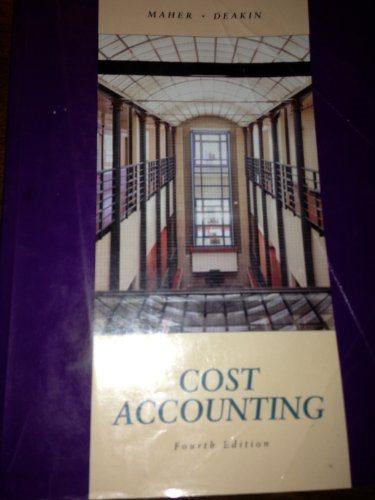Far Eastern Couture imports designer clothing that it has manufactured by subcontractors in Taiwan. Clothing is a
Question:
Far Eastern Couture imports designer clothing that it has manufactured by subcontractors in Taiwan. Clothing is a seasonal product. The goods must be ready for sale prior to the start of the season. Any goods left over at the end of the season must usually be sold at steep discounts. The company prepares a dress design and selects fabrics approximately six months before a given season. These goods are received and distributed at the start of the season. Based on past experience, the company estimates that 60 percent of a particular lot of dresses will be unsold at the end of the season. These dresses are marked down to one half of the initial retail price. Even with the markdown, a substantial number of dresses remain unsold. These remaining dresses are returned to Far Eastern Couture and destroyed. Even though it is known that a large number of dresses must be discounted or destroyed, the company needs to place a minimum order of 1,(X)0 dresses to have a sufficient selection of styles and sizes for marketing the design.
Recently, the company placed an order for 1,000 dresses of a particular design.
The cost of the order was $25,000. In addition, the company pays import duties of
$5,000. The company pays a commission of $7 for each dress that is actually sold at retail, regardless of whether it is sold at the regular price or at the markdown price.
There is a cost of $3 for return mailing and disposing of each dress that is unsold after the end of the markdown period.
a. Use full-absorption costing to compute the inventoriable cost of each dress in this lot of dresses.
b. Suppose the company sells 30 percent of the dresses in this lot at a price of $75 each during the first accounting period. Using full-absorption costing, what is the value of the ending inventory and what is the operating profit or loss for the period assuming there are no other transactions and that the season has not ended so that the number of dresses subject to markdown or to be returned is unknown?
During the second period, 10 percent of the 1 ,000 dresses were sold at full price and 30 percent were sold at the half-price markdown. The remaining dresses were returned and disposed of. Using full-absorption costing, what is the operating profit or loss for the period assuming there are no other transactions?
Suggest a method of accounting for these dresses that would more closely relate revenues and costs.
Step by Step Answer:






